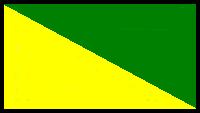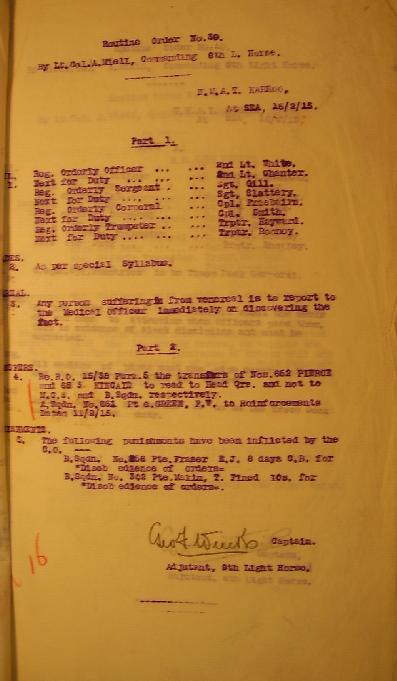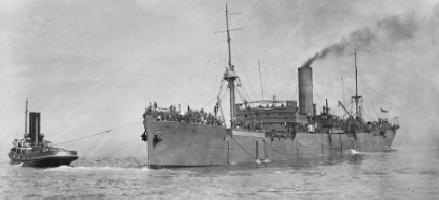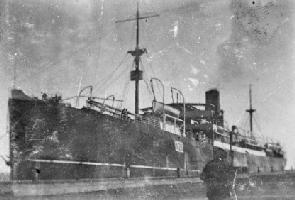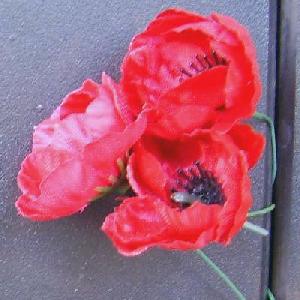The Roll of Honour contains the names of all the men known to have served at one time with the 9th Light Horse Regiment and gave their lives in service of Australia, whether as part of the 9th Light Horse Regiment or another unit.
Thomas AGNEW, Died of Accident, 26 March 1915
William Arthur Francis ALLAN, Died of Wounds, 11 June 1918
Sidney Ernest ALLASON, Killed in Action, 4 July 1918
Harry ALLEN, Died of Illness, 6 November 1918
Christopher William ALLMOND, Died of Illness, 4 September 1918
Harold Leonard ANTONSON, Died of Illness, 16 October 1918
Charles ARBLASTER, Died of Wounds, 24 July 1916
Alfred ARNOLD, Killed in Action, 7 October 1917
Leslie ATKINSON, Died of Illness, 12 December 1916
Alec Luffman AXTENS, Killed in Action, 30 May 1915
William BAKER, Killed in Action, 3 May 1918
William Albert BAKER, Killed in Action, 28 November 1915
William George BALL, Killed in Action, 3 September 1915
James William BARRY, Died of Wounds, 27 April 1917
Walter George BATES, Killed in Action, 29 August 1915
John Pressey BAVIN, Died of Illness, 20 October 1918
Keith Clarence BENNETT, Killed in Action, 12 November 1917
Joseph BETRO, Died of Wounds, 26 October 1915
Harry BINYON, Killed in Action, 30 May 1915
Walter Lewis BISHOP, Died of Wounds, 23 September 1917
Henry Albert BLACKWELL, Died of Wounds, 29 May 1915
Edward Thomas BLAKE, Died of Wounds, 30 August 1917
Henry BLANCH, Killed in Action, 20 June 1915
Rockley Joseph BOARDMAN, Killed in Action, 1 September 1918
Felix Baron BOCKELBERG, Killed in Action, 3 May 1918
James Lowry BODKIN, Died of Wounds, 1 November 1917
Robert Hugh BOND, Died of Illness, 11 December 1916
Ernest BONE, Died of Illness, 5 October 1918
Josiah Clifton BONEHAM, Died of Illness, 15 October 1918
James Albert BOTHWELL, Died of Accident, 7 August 1917
John BRENNAN, Died of Wounds, 16 October 1915
Allan Reuben BROWN, Died of Illness, 26 March 1916
William BROWNEY, Killed in Action, 28 July 1917
Charles John BRUCE, Killed in Action, 5 August 1916
Alexander Millar BUGBIRD, Killed in Action, 29 August 1915
Robert David BURNSIDE, Killed in Action, 31 August 1916
James Andrew BURROUGH, Died of Illness, 9 December 1915
Michael BYRNE, Died of Wounds, 30 August 1915
Reuben CAIRNS, Killed in Action, 29 August 1915
Philip Ignatius CALLARY, Killed in Action, 29 August 1915
William CAMERON, Killed in Action, 4 September 1915
Thomas CAMPBELL, Killed in Action, 8 April 1917
George Alton CANE, Died of Wounds, 30 August 1915
Percival CAPERN, Killed in Action, 28 August 1915
William Ross CAPPER, Killed in Action, 28 August 1915
Leslie Harry CAREY, Drowned 1 May 1917
Frederick Michael CARNEY, Killed in Action, 1 November 1917
Alexander Lawrence CARRAILL, Died of Wounds, 8 August 1918
Henry James CARROLL, Died of Wounds, 9 August 1916
Reginald Stanley CHRISTIE, Died of Illness, 5 December 1918
Eric Gordon CLARK, Killed in Action, 28 June 1915
Edward Charles CLOUGH, Killed in Action, 29 May 1915
Charles William COLLINS, Killed in Action, 29 November 1915
Alfred Edward COOK, Died of Wounds, 4 July 1915
Clarence George COOPER, Died of Illness, 17 January 1917
Clifford COOPER, Died of Illness, 8 August 1915
Arthur COPELAND, Died of Wounds, 5 September 1917
Alfred CORK, Killed in Action, 19 April 1917
Robert COVERDALE, Killed in Action, 29 August 1915
Walter Hiram CRAVEN, Killed in Action, 29 August 1915
Frank CREER, Died of disease 2 May 1915
Raymond Henry CRITCHFIELD, Died of Illness, 9 September 1919
Michael Parnel CRONIN, Killed in Action, 19 April 1917
Patrick Augustine CROWE, Died of Wounds, 28 March 1918
Thomas William CULPH, Died of Wounds, 14 August 1915
John Newton DAVIES, Killed in Action, 11 March 1917
Perry Thomas DAVIS, Died of Wounds, 27 November 1917
Claude Maxmillian Eugan DAWSON, Died of Illness, 29 October 1918
Walter DAWSON, Killed in Action, 28 August 1915
Albert Thomas DAY, Died of Wounds, 10 August 1915
Garnet DELANTY, Died of Illness, 17 October 1918
Francis James DENNIS, Killed in Action, 6 November 1917
Martin DEVITT, Died of Illness, 7 July 1918
Avery Benjamin DICKINSON, Died of Wounds, 22 July 1915
Thomas DICKINSON, Killed in Action, 28 August 1915
Frederick Roy DICKSON, Died of Illness, 1 February 1920
John Bernard DILLON, Died of Illness, 16 October 1918
Gordon McKellar DOBBIE, Died of Wounds, 26 September 1917
Leopold Daniel DOOLEY, Died of Illness, 7 December 1916
Arthur Denis DORIS, Killed in Action, 28 August 1915
Arthur Christopher DOWN, Died of Wounds, 9 October 1918
Frank Napier DREW, Died of Wounds, 8 August 1915
Arthur Roy EARL, Died of Accident, 26 July 1917
George EDDINGTON, Killed in Action, 2 October 1917
Alfred Lawrence EDWARDS, Killed in Action, 4 September 1917
Francis Patrick EGAN, Died of Illness, 12 May 1916
Fred Bertram ELLIS, Killed in Action, 28 March 1918
Cuthbert ELSDON, Killed in Action, 19 April 1917
Melville Orchard FARMER, Killed in Action, 30 April 1918
George FENNING, Died of Accident, 23 March 1919
William FENTON, Died of Illness, 23 December 1916
James Maxwell FERGUSON, Died of Wounds, 20 March 1919
John Matt FITCHER, Killed in Action, 28 August 1915
William George Gladstone FITZGERALD, Killed in Action, 29 August 1915
Norman MacPherson FLEMING, Killed in Action, 30 April 1918
George Edwin Pearce FLETCHER, Died of Wounds, 20 July 1918
Hedley Vickers FLOWER, Died of Wounds, 30 June 1915
John Lester FOREMAN, Died of Illness, 12 October 1918
Harold Stanley FREEMAN, Died of Illness, 29 January 1916
Edward FROST, Died of Illness, 23 October 1918
William John GALLAGHER, Died of Illness, 13 October 1918
Alfred Joseph GARRATT , Died of Wounds, 18 July 1918
Norman William GATES, Killed in Action, 28 March 1917
John William GAVIN, Killed in Action, 9 August 1916
Percy Alexander GIBBS, Died of Wounds, 12 November 1917
Benjamin Digby GIBSON, Drowned 14 January 1917
John William GILL, Killed in Action, 29 August 1915
Hugh Louden GOOCH, Killed in Action, 28 August 1915
Alick Ferguson GOODE, Killed in Action, 10 September 1917
Arthur Hulme GOTT, Died of Illness, 25 August 1915
William Harry GREEN, Died of Wounds, 3 September 1915
William James GRIBBLE, Killed in Action, 22 June 1915
Thomas GRIFFITHS, Killed in Action, 30 May 1915
George Joseph HAAG, Killed in Action, 30 March 1918
Walter HACKETT, Killed in Action, 22 October 1918
William HAINS, Killed in Action, 19 April 1917
Herbert Bowen HAMLIN, Died of Illness, 30 May 1919
Hubert Herman HANK, Died of Illness, 13 June 1918
Edward Pearce HANRAHAN, Died of Wounds, 9 October 1918
John Albert HARRELL, Killed in Action, 4 February 1917
Maxwell David HARRINGTON, Killed in Action, 29 August 1915
Charles Morley HARRIS, Died of Accident, 23 September 1918
Rowland HARRIS, Died of Illness, 18 March 1917
Samuel HARRIS, Died of Illness, 7 May 1918
Albert Harris HARVEY, Died of Wounds, 3 October 1918
William Edward HARVEY, Killed in Action, 7 August 1915
Frederick Eugene HAWKE, Died of Illness, 4 September 1916
Waldeman Robert HAWKES, Killed in Action, 29 October 1917
Alexander Lincoln HAWSON, Died of Wounds, 12 June 1915
Harold HEATH, Died of Wounds, 3 June 1916
Austin James HEITHERSAY, Died of Wounds, 12 January 1917
John HENNESSY, Died of Illness, 23 July 1915
John Henry HILDEBRAND, Killed in Action, 28 June 1915
Herbert John HILDER, Died of Illness, 27 November 1917
Francis George HIPWORTH, Died of Accident, 20 May 1915
Robert Charles HOCKRIDGE, Died of Illness, 24 July 1915
Herbert Clifford HOLLOWAY, Died of Illness, 3 December 1918
James Patrick HOLOPHY, Died of Wounds, 1 April 1918
Guy HOOPER, Killed in Action, 16 August 1917
John Leslie HOPPING, Killed in Action, 30 June 1915
William John HOY, Died of Illness, 13 October 1916
Roy William HUDSON, Died of Wounds, 18 September 1919
Cyril HUMPHREYS, Killed in Action, 29 August 1915
John Edward HUTCHINS, Died of Accident, 12 June 1919
Arthur Justin Sanford HUTCHINSON, Killed in Action, 19 July 1916
Frank HYDEN, Died of Wounds, 24 October 1917
Alfred John JAFFRAY, Killed in Action, 29 August 1915
Eric James JARRETT, Killed in Action, 28 March 1918
Harold Norman JARRETT, Died of Wounds, 16 September 1915
Arthur Alfred JOHNS, Died of Illness, 11 October 1918
David JOHNSON, Died of Illness, 2 August 1915
Reginald John James JOHNSON, Killed in Action, 27 June 1917
Herbert Malcolm JOHNSTON, Died of Illness, 22 February 1916
Albert Edward JONES, Died of Accident, 24 June 1918
Keith David JONES, Died of Wounds, 2 March 1918
Elias JUDELL, Killed in Action, 9 August 1915
Herbert Clifford Henry KADOW, Killed in Action, 1 September 1918
Frederick Thomas KEANE, Killed in Action, 19 April 1917
Hugh Craine KELLY, Killed in Action, 18 October 1917
Harry KEMP, Killed in Action, 14 October 1917
Francis Burwood KENT, Died of Wounds, 10 July 1915
John Scott KENT, Killed in Action, 29 August 1915
William Thomas KEOUGH, Died of Illness, 18 October 1915
Frederick Arthur KESHAN, Died of Illness, 11 December 1918
Alexander KING, Killed in Action, 6 August 1915
John Fleming KITHER, Died of Illness, 12 November 1918
Adolph KLAR , Died of Wounds, 25 March 1918
William John KNIBBS, Killed in Action, 29 August 1915
Ernest Hyahman KORTMAN, Died of Wounds, 22 August 1917
Alfred James LAKE, Killed in Action, 30 April 1918
Robert William LAKIN, Killed in Action, 22 July 1917
Charles Henry LANE, Died of Wounds, 29 June 1915
Eric Robert LANGE, Died of Wounds, 13 June 1919
Alfred LAWTON, Died of Wounds, 22 April 1917
Claude Michael LEAHY, Killed in Action, 31 October 1917
William Edward LEAR, Killed in Action, 29 August 1915
William James LEARMONTH, Died of Accident, 22 April 1918
James LEMON, Died of Illness, 30 October 1918
Benjamin Cyril LEVIEN, Killed in Action, 28 August 1915
Alfred LEVINGSTON, Died of Illness, 17 November 1917
Thomas Albert LEWIS, Died of Accident, 27 January 1919
John Thomas Joseph LIDDY, Died of Illness, 3 March 1919
Timothy Michael LINEHAN, Died of Wounds, 20 April 1917
Thomas LITSTER, Killed in Action, 5 August 1916
William Horace LLOYD, Killed in Action, 25 March 1918
James Leonard LOCKE, Died of Wounds, 5 June 1915
Arthur LOWRIE, Died of Illness, 31 January 1918
Clement Aloysius Joseph MAHONY, Killed in Action, 11 April 1917
Thomas MAKIN, Killed in Action, 22 June 1915
Fred Stanley MALE, Killed in Action, 27 May 1918
Patrick Joseph MALONEY, Died of Illness, 19 October 1918
George Noble MANN, Died of Wounds, 29 September 1918
Robert MANUEL, Died of Wounds, 3 November 1917
Clifford Roy MARR, Killed in Action, 6 July 1918
George Henry MARSH, Died of Wounds, 12 August 1918
Wallace MAUDE, Killed in Action, 13 August 1915
Christopher Alfred MAUSOLF, Killed in Action, 2 May 1918
Herbert George MAY, Died of Illness, 26 September 1917
Clarence James MCCARRON, Died of Wounds, 21 March 1918
Arthur Elliot MCDONALD, Died of Wounds, 9 September 1915
John Frederick William MCDONALD, Died of Illness, 21 April 1918
Richard Augustine MCDONALD, Died of Illness, 17 October 1918
Duncan MCDOUGALL, Killed in Action, 28 August 1915
Frank Ormond MCEVOY, Killed in Action, 9 April 1917
James Alexander MCGILLIVRAY, Killed in Action, 28 August 1915
Stephen Percival MCGINTY, Killed in Action, 3 May 1918
John Robert MCINTOSH , Died of Wounds, 15 April 1917
Brian MCKENNA, Killed in Action, 19 April 1917
Bernard Scrymgour MCKENZIE, Died of Wounds, 20 January 1918
Leslie John MCLEOD, Died of Illness, 29 August 1915
Angas MCMASTER, Killed in Action, 31 July 1917
Stirling Alexander MCWILLIAM, Died of Wounds, 30 May 1915
Provo William MEDHURST, Killed in Action, 3 May 1918
John Henry MEGAN, Died of Wounds, 29 August 1915
Owen Thomas MERCER, Died of Wounds, 4 June 1915
Albert MIELL, Killed in Action, 7 August 1915
Thomas Francis MILES, Died of Illness, 26 February 1917
Ernest William MILLARD, Died of Wounds, 15 May 1918
Charles Leslie MITCHELL, Died of Wounds, 19 April 1917
William George Delmar MOBBS, Killed in Action, 28 August 1915
Frederick Richard MORGAN, Died of Wounds, 13 October 1918
William MORPHETT, Killed in Action, 10 August 1915
Arthur Oliver MORRELL, Killed in Action, 27 September 1917
Donald James MORRISON, Killed in Action, 31 October 1917
Richard Giles MOULD, Died of Illness, 6 September 1915
Gilbert Charles MOUNSEY, Killed in Action, 9 August 1916
Kenneth Andrew MUDGE, Killed in Action, 19 April 1917
Kenneth Andrew MUDGE, Killed in Action, 19 April 1917
Malcolm George Douglas MURRAY, Died of Illness, 25 October 1918
Leonard Temper NAPPER, Killed in Action, 28 August 1915
William NETTLETON, Killed in Action, 19 April 1917
William NEVIN, Killed in Action, 5 November 1917
Arthur Rastarick NIELD, Killed in Action, 11 April 1918
Clarence Edwin NORTON, Killed in Action, 4 December 1915
William Arthur O'BRIEN, Killed in Action, 5 April 1918
Roy OERMANN, Died of Wounds, 10 June 1918
Percy George PAGET, Died of Wounds, 18 February 1917
Alan Dexter PALMER, Killed in Action, 6 August 1916
Roy Victor PARASIERS, Killed in Action, 4 September 1917
Frederick William PARKER, Died of Wounds, 14 August 1918
Charles Daniel PATTEN, Died of Illness, 9 February 1917
Albert Edward John PETRUSCH, Died of Wounds, 20 June 1915
Leonard PITCHERS, Died of Accident, 13 October 1914
Henry Richard Alfred PIX, Killed in Action, 23 December 1916
Richard Rowett POND, Killed in Action, 9 August 1916
Arthur Henry POPE, Died of Illness, 17 November 1918
Charles Baxter POWELL, Killed in Action, 9 August 1916
George Albert PRICE, Died of Illness, 26 July 1917
James Bryant PULLEINE, Killed in Action, 28 August 1915
Edward RADBURN, Died of Wounds, 10 July 1915
John Thain RAMSAY, Killed in Action, 31 August 1918
Leslie REGAN, Killed in Action, 29 August 1915
George Donald RENTON, Died of Illness, 29 May 1916
Carew REYNELL, Killed in Action, 28 August 1915
John Thomas REYNOLDS, Died of Wounds, 16 November 1917
Frederick James Archibald RICHARDS, Killed in Action, 16 September 1915
Reginald Holman RICHARDS, Died of Wounds, 16 September 1915
William Ernest RICHTER, Died of Wounds, 9 August 1919
Harrie Cecil RICKARD, Killed in Action, 5 September 1915
Eric Bertram RIDGWAY, Died of Wounds, 1 July 1917
William Thomas RILEY, Died of Wounds, 15 June 1915
Kelvin ROACH, Died of Wounds, 20 April 1917
Geoffrey Ochiltree ROBERTSON, Killed in Action, 13 August 1916
Geoffrey De Quetteville ROBIN, Killed in Action, 19 July 1916
Richard George ROBINSON, Died of Wounds, 19 April 1917
Sinclair Archibald ROSIE, Died of Illness, 15 October 1916
Richard Calo ROSS, Killed in Action, 7 June 1917
Dedrich ROZENFELD, Died of Wounds, 9 September 1917
James RUSHTON, Killed in Action, 3 May 1918
Ralph Thomas SABINE, Killed in Action, 28 October 1915
Charles Ernest George SAMPSON, Killed in Action, 28 August 1915
Harold SAMUELS, Killed in Action, 19 April 1917
Spencer Lane SCHOCROFT, Died of Wounds, 13 August 1915
Frank Lesley SCHUYLER, Died of Wounds, 20 April 1917
Andrew SCOTT, Died of Wounds, 2 November 1917
John Burns SCOTT, Killed in Action, 8 October 1915
Percy George SCROOP, Died of Illness, 28 December 1916
George Routhwell SEAGER, Killed in Action, 7 August 1915
William Henry SHADFORTH, Killed in Action, 12 November 1917
Andrew Mitchell SHARP, Killed in Action, 5 August 1916
Gavin SHUTTLEWORTH, Killed in Action, 9 August 1916
James Haining SINCLAIR, Killed in Action, 31 July 1917
Francis William SLATTERY, Killed in Action, 19 September 1916
Arthur Carrington SMEDLEY, Died of Wounds, 9 August 1915
Percival Vernon SMILY, Died of Wounds, 17 June 1915
Alfred John SMITH, Died of Wounds, 14 July 1918
Eric Korf SMITH, Died of Illness, 9 October 1918
Fredrick Joseph SMITH, Killed in Action, 7 August 1915
Harold Edward SMITH, Killed in Action, 29 August 1915
James Charles SMITH, Died of Accident, 29 January 1915
Lawrence Jacob SMITH, Died of Illness, 11 November 1918
Thomas William SMITH, Killed in Action, 30 September 1918
Walter George SMITH, Drowned 15 June 1917
William Japhet James SMITH, Died of Illness, 22 October 1918
James Norman SMYTH, Died of Illness, 25 October 1918
John Hearn SNOWBALL, Died of Wounds, 15 September 1916
Clifton James SPARGO, Died of Illness, 15 October 1918
Henry SPENCER, Died of Wounds, 28 August 1915
Laurans Charles SPINKS, Killed in Action, 28 August 1915
Gilbert STALKER, Died of Illness, 31 December 1916
Allan STEPHENSON, Killed in Action, 5 April 1918
William STEVENS, Died of Illness, 17 October 1918
Hartley James STEWART, Died of Wounds, 23 August 1918
John Thomas STILL, Died of Wounds, 1 November 1917
Harold SULLIVAN, Died of Illness, 6 March 1917
Montague SWETTENHAM, Killed in Action, 15 June 1918
Sydney Louis SWIFT, Died of Wounds, 25 August 1918
Eric Darcy TAPFIELD, Killed in Action, 30 March 1918
Murray Gleeson TAYLOR, Died of Illness, 27 January 1917
Oliver Frank Leopold TAYLOR, Killed in Action, 29 August 1915
Arthur THURLOW, Killed in Action, 12 November 1917
Stephen John TOMKINS, Died of Wounds, 19 April 1917
Charles TOMLINSON, Died of Wounds, 30 July 1917
Geoffrey TRAVERS, Died of Wounds, 11 August 1916
Leslie Albert Llewellyn TREBILCOCK, Died of Illness, 22 July 1915
Percy Oswald TRUMAN, Killed in Action, 19 April 1917
Richard George TUDGEY, Died of Wounds, 7 June 1915
Robert TUHERA, Died of Illness, 12 September 1918
Frank Richard UPHILL, Died of Illness, 21 October 1918
Charles VINCENT, Died of Illness, 24 November 1916
Eric Arnold WADE, Killed in Action, 25 July 1916
George Byron WALLACE, Died of Illness, 20 January 1918
William Nicholls WALLACE, Died of Illness, 26 October 1918
Albert WALLADGE, Died of Illness, 28 August 1915
James Robertson WALTERS, Killed in Action, 30 April 1918
William Victor WEABER, Died of Wounds, 7 June 1918
Thomas Francis WEATHERS, Died of Wounds, 15 June 1915
Alfred Charles WEAVER, Died of Wounds, 31 March 1918
Fredrick Henry WEAVER, Killed in Action, 28 August 1915
Roy Albert WHEATON, Died of Wounds, 23 April 1917
William Henry WHITE, Died of Wounds, 16 September 1915
Francis Charles WILKIN, Killed in Action, 30 September 1918
George WILLIAMSON, Died of Accident, 11 April 1918
Francis WILLOUGHBY, Killed in Action, 28 August 1915
Leslie Samuel WILSON, Killed in Action, 22 June 1915
William Ferguson WOOD, Killed in Action, 6 August 1915
Douglas WOODHOUSE, Died of Wounds, 28 June 1918
Arthur WOODS, Died of Illness, 8 October 1918
Alexander Roberteon WRIGHT, Killed in Action, 6 November 1917
Leo John WYMAN, Killed in Action, 9 August 1915
Andrew Powell YEATES, Died of Wounds, 30 August 1915
Lest We Forget
